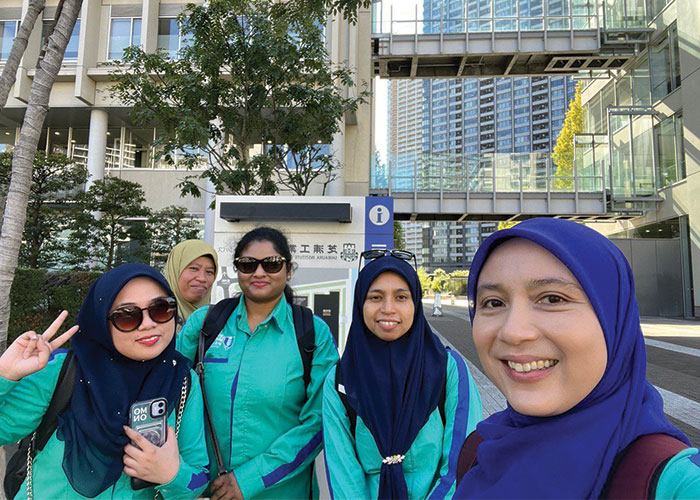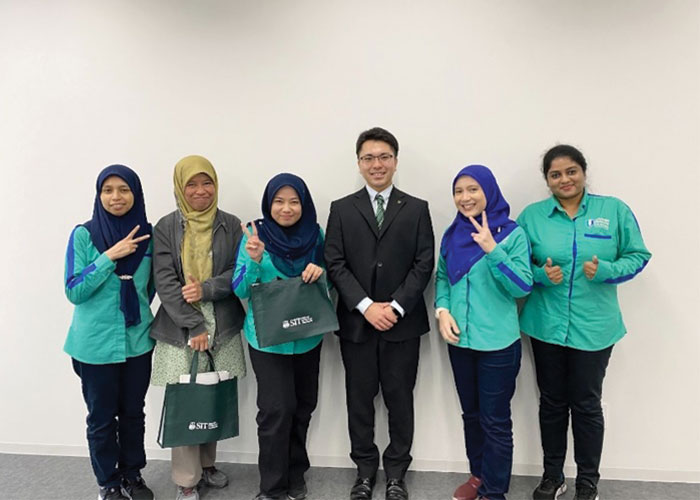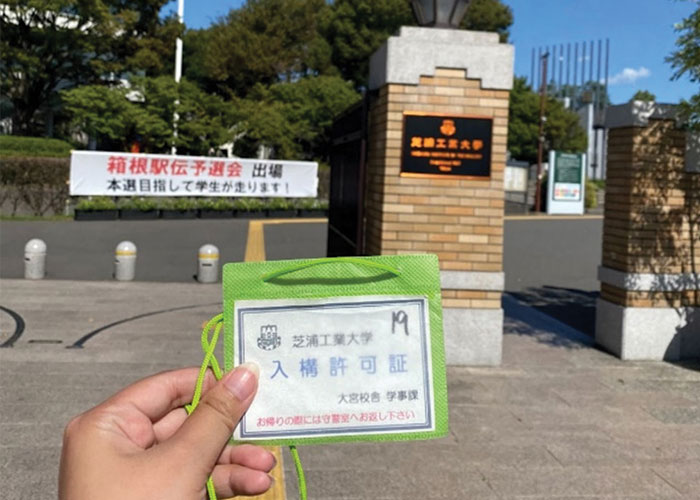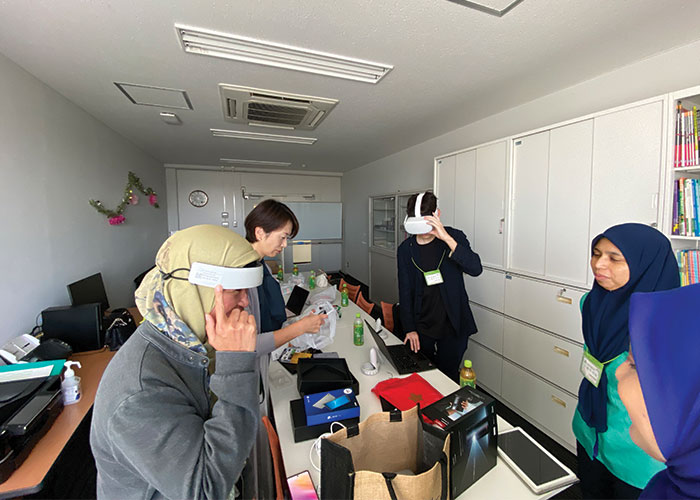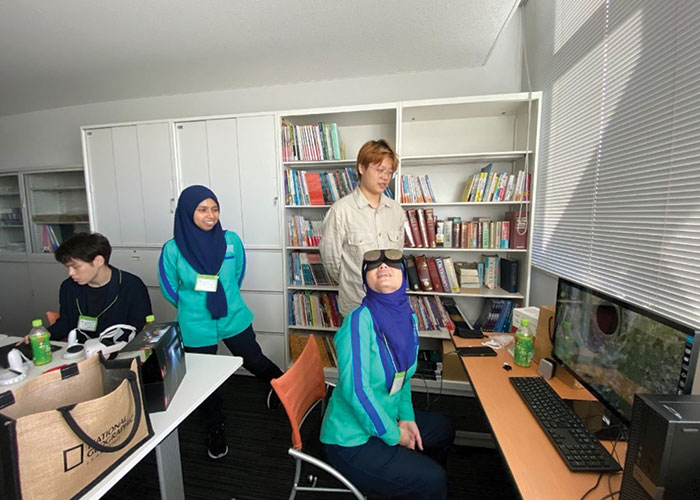TRANSCENDING FUTURE LANGUAGE LEARNING VIA VIRTUAL REALITY
Virtual Reality (VR) has evolved rapidly from two-dimensional (2D) text-based online virtual environments to more sophisticated three-dimensional (3D) virtual spaces and avatars. Recent studies have even classified VR into low-immersion VR and high-immersion VR.
Significantly, learning a language is more effective when it occurs in a context as it creates authentic environments which are proven to be meaningful for the learners. Hence, the language immersion method afforded by VR can be manipulated for effective language learning to take place.
Eager to delve deeper into the potential of VR to assist language learning, a group of delegates from UMPSA, led by Associate Professor Dr. Nik Aloesnita Nik Mohd Alwi and accompanied by Associate Professor Dr. Hafizoah Kassim, Ms. Nur Syafawati Sabuan, Ms. Arulselvi Uthayakumaran, and Ms Wan Noor Farah Wan Shamsuddin, recently visited a VR lab at Shibaura Institute of Technology (SIT), Omiya Campus, Japan on October 6, 2023.
This initiative seeks to immerse participants in the latest technological developments and best practices in Japan, with the goal to elevate classroom experience.
Prior to visiting the VR lab at SIT Omiya campus, the delegates visited the SIT International Office (SIT IO) at Toyosu Campus. Upon arrival, the UMPSA team was immediately greeted by an amazing architectural design of the newly built campus with an urban forest-city concept.
A meeting was held between the UMPSA and the SIT IO teams, with Mr. Yuya Miyasaka leading the discussion on behalf of the SIT IO, and Professor Dr Hiroyuki Ishizaki attending the meeting virtually. It was a pleasure to learn that there are a lot of common academic and research interests between the two institutions that can be explored further.
Mr. Miyasaka expressed the interest to engage with UMPSA, especially on the activities conducted under the SIT Global Technology Initiative Consortium. The meeting was also informed that SIT was among the first private universities in Japan that was entrusted with internationalisation initiatives by the Japanese government. Hence, this could be a good match for UMPSA to explore the possibilities to expand the dual degree programmes with its partners from Japan higher education institutions, including SIT.
The journey continued from the SIT Toyosu campus to the Omiya campus in approximately two hours via train. Upon arrival, the delegates were greeted by Professor Dr Kayoko Murakami, the researcher at the Tourism and Language Information Laboratory, SIT. She was accompanied by Professor Dr Atsuko Yamazaki, a former SIT professor currently affiliated with Digital Hollywood University, Tokyo.
Also present were the VR developer, Mr. Naoya Yamamoto, CEO of Casaliz Inc. and two postgraduate students, Mr. Zhenyu Wang and Mr. Ren Adachi working on VR research at Professor Murakami’s lab.
The team from UMPSA was amazed to learn that Professor Murakami is currently collaborating with a renowned hotel in Japan conducting VR research. Her team develops a VR environment replicating the actual hotel setting which includes the lobby and the front desk. Learners engaging with the VR applications will be able to learn and practice the appropriate language as used at a hotel counter, i.e. between the receptionist and the customer.
Interestingly, the VR research by Professor Murakami also makes use of a mobile EEG device to measure electrical activity in one’s brain as well as the heartbeats. Typically, a questionnaire is used to examine the level of anxiety during communication. However, using the mobile EEG device is an alternative to measure one’s anxiety while communicating. Intervention can then be conducted to increase language performance and consequently reduce one’s anxiety. Such is a wonderful experience for the UMPSA delegates and it has widened up their views of technology used in language-related research. The discussion on VR research wrapped up with some Q&A.
Finally, photography and gift exchange sessions were held to commemorate the visit. SIT has been a kind host by sharing their experience with VR research. The visit was concluded by their sweet gestures serving the UMPSA team delicious Japanese delicacies including green tea and some traditional biscuits.
In general, this visit signals a new era for future research in language studies, offering a glimpse into how cutting-edge technology is being harnessed to unlock human communication. As VR continues to expand its applications, the potential for transformative breakthroughs in various scientific fields, particularly linguistics and education, is boundless.
Prepared by: Associate Professor Dr. Nik Aloesnita Nik Mohd Alwi, Associate Professor Dr. Hafizoah Kassim, Wan Noor Farah Wan Shamsuddin, Nur Syafawati Sabuan, and Arulselvi Uthayakumaran.

